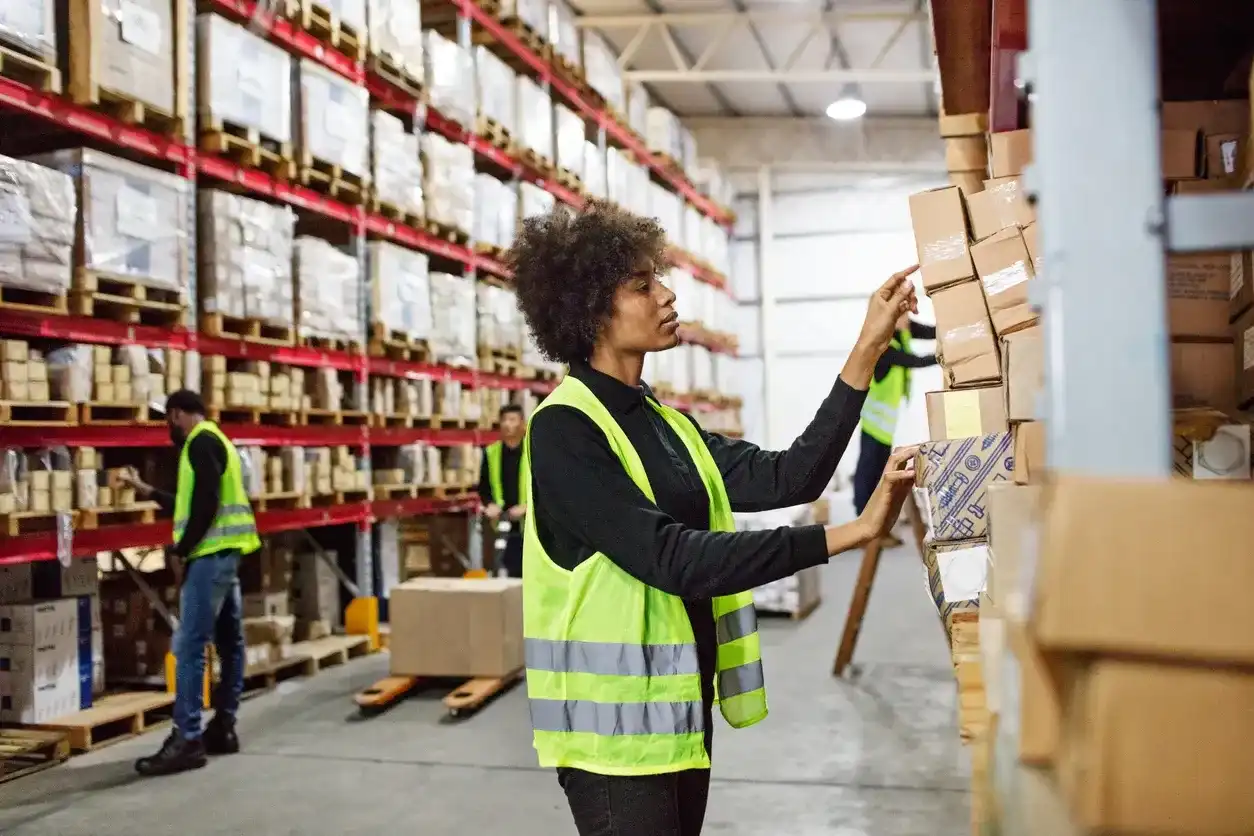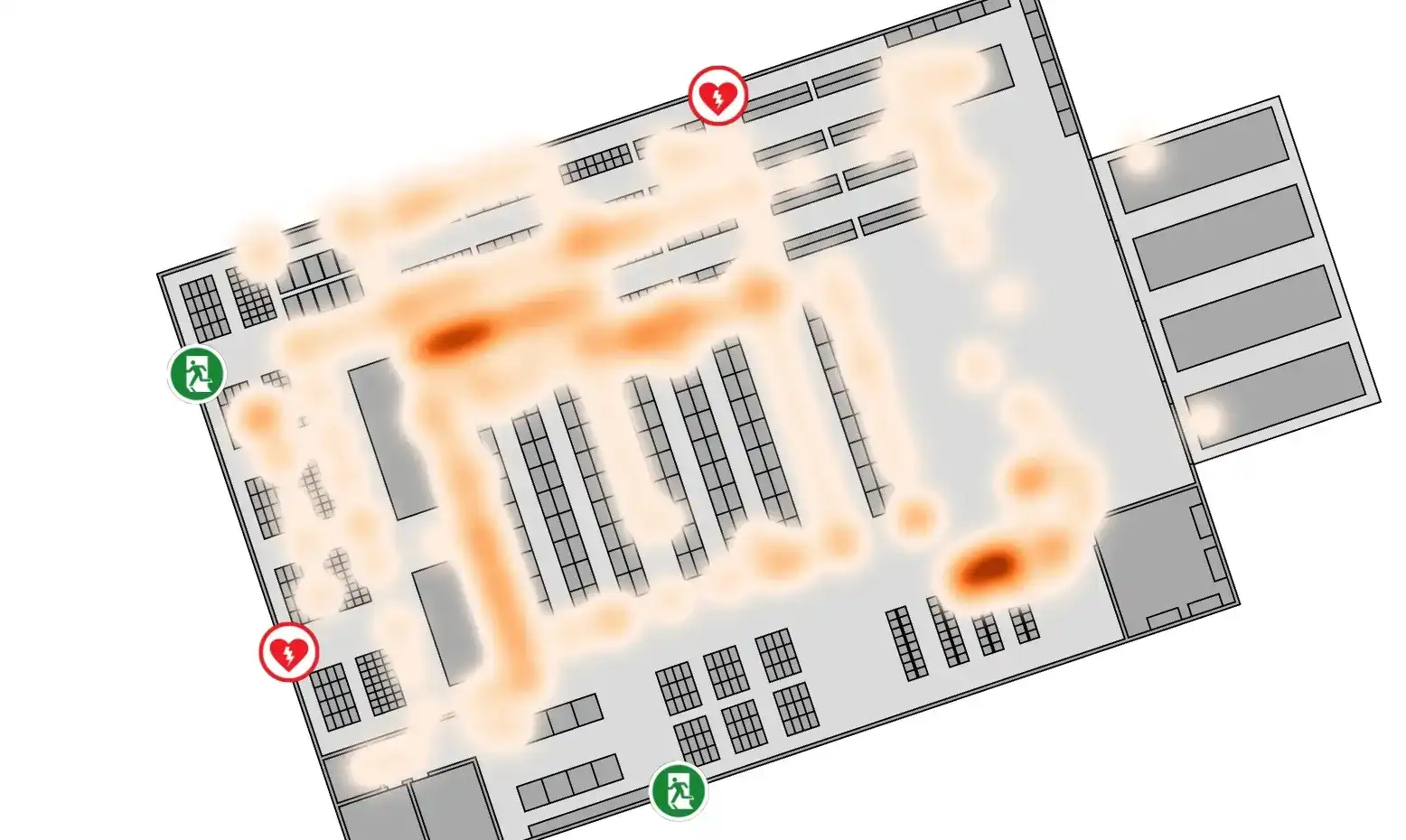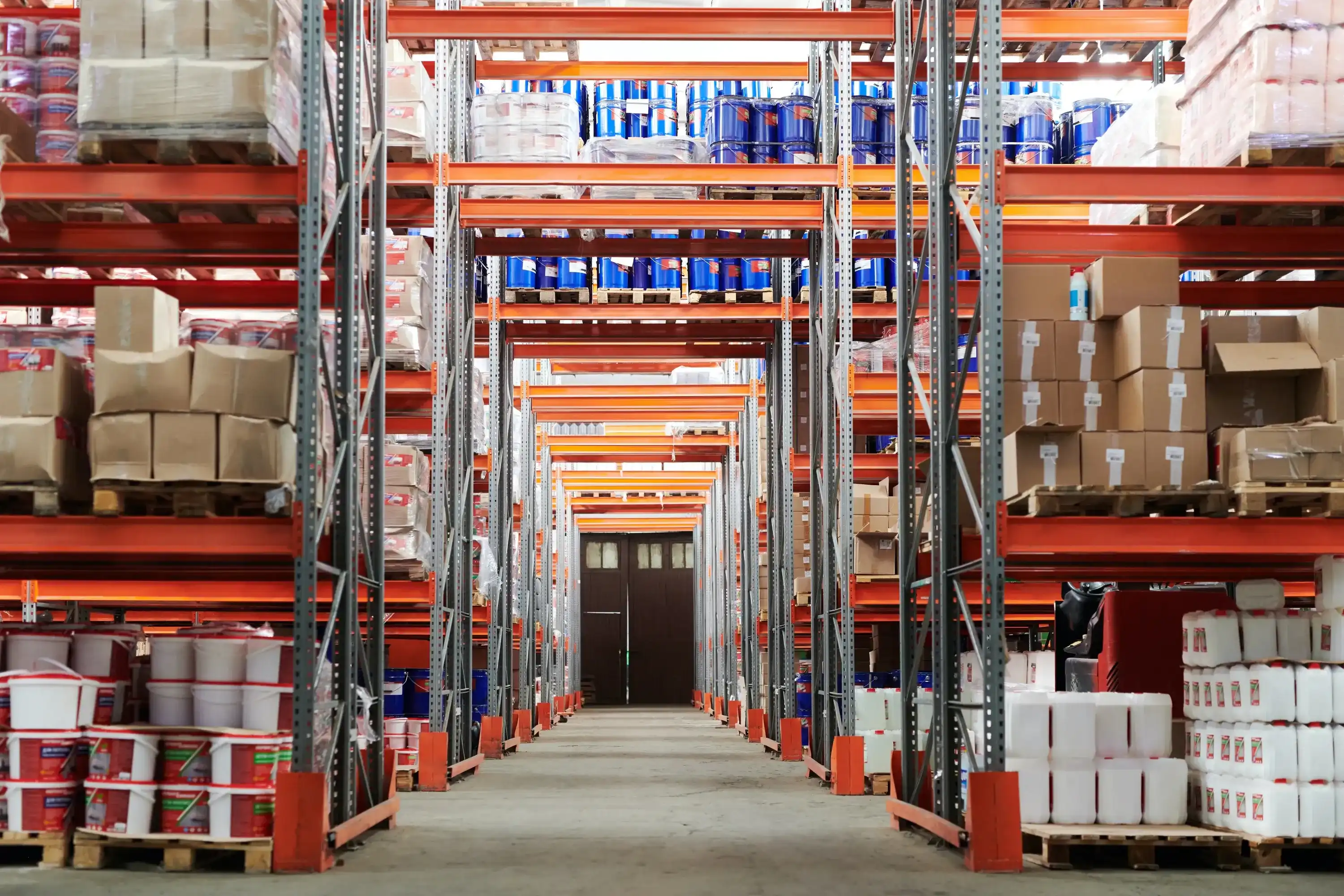Start Here
Indoor positioning systems increase warehouse efficiency through 3D indoor mapping that optimizes navigation routes for picking and packing, asset tracking of equipment and inventory, employee analytics for performance monitoring, space planning through layout testing, enhanced safety protocols with real-time machinery monitoring, and automated security measures for emergency response. Warehouse management and operations can reduce travel times, improve order fulfillment rates, optimize storage space, and maintain end-to-end visibility of operations for better productivity and safety.
People everywhere depend on warehouses to ship products quickly and accurately. Therefore, warehouses need to pride themselves on creating an efficient work environment that enables a speedy delivery of products. Indoor positioning systems can help increase efficiency in warehouses to create an enhanced experience for employees, warehouse managers, customers, and more. Below are some ways that indoor positioning systems can increase warehouse efficiency and accuracy.
Indoor mapping & positioning
3D indoor maps create a visual representation of the warehouse to highlight amenities, equipment, employees, and more. A digital map can provide information on featured equipment. For example, whether a forklift is in use or not and the proper training required to operate it. To take this experience one step further, indoor navigation and indoor positioning can be implemented into the 3D map. Mappedin transforms 2D floor plans into useable and editable indoor maps to create a digital 3D navigation experience.
These technologies create optimal routes for workers to navigate through the warehouse and provide directions to the exact location of items needed for picking and packing. Indoor positioning can pinpoint an employee’s location to track their whereabouts when picking and packing, making them accessible to other users while providing an efficient picking path.
Increased accountability
Tracking employees and the way they move through the warehouse creates accountability for procedures to be followed and executed by all warehouse workers. Warehouse managers are able to see mistakes, like an employee misplacing an item, or even track slow pickers and packers to see which areas of the warehouse need to be improved. Indoor positioning can account for unauthorized personnel using prohibited equipment to prevent injury and hold an employee accountable in the event of an accident. This allows warehouse managers to keep on top of their business and ensures the warehouse is running smoothly and efficiently.
Employee insights and analytics
Warehouse managers can collect data from common employee routes throughout the warehouse and identify ways to shorten travel distances and reduce travel time. Warehouses can also use insights and analytics from indoor positioning systems to crowd control congested areas. This can increase efficiency by creating clear paths for employees to navigate through. Indoor positioning can calculate the amount of time an employee spends on allocated tasks to see if there is a way to increase efficiency. This can track personnel performance to see if they are meeting the required standards of the warehouse. Warehouse managers can use this data to compare their performance to others and see which zones can be improved.
Space planning
Insights and analytics can provoke warehouses to rethink the layout of their venue. Indoor positioning systems highlight areas that need to be rearranged to create optimized pathing and organization. With an indoor map, warehouses can use a Map Editor to try different layouts of the venue to see which one is the most suitable, without the heavy lifting of manually moving around equipment and pallets over and over again. A Map Editor can also be used to notify employees if a piece of equipment is broken or an area is blocked off by updating its status on the digital map. Warehouses can make changes to their map accordingly and upload them in real-time to ensure employees always have the most up-to-date information.

Asset tracking
Indoor positioning can be used for asset tracking by placing tags on anything from heavy machinery to small bins of items. With this technology in place, warehouses can manage in-transit products and in-warehouse inventory to visualize moving items in the warehouse.
Improved safety & accessibility
Asset tracking can monitor moving objects such as large pieces of machinery, to ensure they are being used properly and safely. With a real-time tracking system, warehouses can keep track of moving pallets and maintain end-to-end visibility of all assets to ensure safety protocols are met. Along with tracking assets for safety, warehouses can ensure that materials are stored and handled correctly. Asset tracking allows employees to easily find the products or equipment they need, while also reducing waste from unnecessary items. Warehouses can improve performance rates when reducing any human error that creates a delay in shipping, such as the misplacement of pallets.
Asset data analytics
Warehouses can use asset data analytics to gain insight into equipment usage. For example, a warehouse can collect the data from indoor positioning systems to track a pallet and see how long it has been there, to understand the flow of the warehouse. Warehouses can also use insights and analytics to see which equipment is being used the most and will require frequent maintenance. Asset tracking analytics can help warehouses keep tabs on all products to prevent theft. Anti-theft monitoring is crucial to verify if an employee is trustworthy when items are misplaced and ensure customers always get what they paid for.
Indoor positioning systems can also increase order fulfillment and stock replenishment rates by tracking assets to see how quickly orders are being picked, packed, and shipped. Indoor positioning systems can monitor production time and trigger alerts when there is a delay, allowing warehouse managers to collect this data and improve their workflow. Warehouses can use asset tracking data to compare time spent in each zone to highlight areas that can use improvement and understand which methods are working.

Storage optimization
To optimize storage space, inventory is usually stored in separate zones to avoid mixing and create easy access for retrieval. Indoor positioning systems can ensure storage is monitored effectively by tracking individual items. Warehouses can create optimal storage space by planning where items should be placed. Pallets can take up a lot of space, so planning storage spaces accordingly can create a more organized and efficient warehouse.
Amazon is a company that optimizes storage space through a method called “chaotic storage.” Amazon employees will immediately fill empty shelf space, regardless of which zone it is located in. This method saves time in a warehouse by immediately putting away items, but organization can be a problem. Indoor positioning technology ensures that inventory can be kept track of so warehouses can store items quickly and efficiently while using this method.
Safety & security
Safety improvements
Indoor positioning can be used for safety protocols to create a safe environment when working with heavy machinery. Indoor positioning technology can provide a bird’s-eye view of operations and team members, allowing warehouses to take corrective action where needed. Automated authorization for employees entering a specific space or operating a piece of equipment can save time from entering passwords and rid of extra keys to keep track of. Warehouses can also use indoor positioning systems to keep employees safe and healthy by monitoring sensors such as air quality, tilt, acceleration, pressure, and more.
Security measures
Warehouses can be dangerous and need to be prepared for any emergency situation in order to keep employees safe at all times. In the event of an emergency, like a pallet falling on an employee in the warehouse, first responders can be alerted and use indoor positioning technologies to be directed to an injured employee’s exact location. Emergency services can also utilize indoor positioning systems to alert employees of proper procedures and evacuation directions in the event of an emergency, such as an earthquake or fire alarm. Indoor positioning systems can track the quickest and most efficient routes for evacuation, ensuring all employees exit the building safely and securely.
Indoor positioning can positively impact warehouse performance rates by increasing efficiency. With warehouse mapping solutions, workers can ensure customers get the desired items they need quickly and without any error. To learn more about how indoor positioning systems can revolutionize your warehouse, contact us or visit our website for more information.
Share


